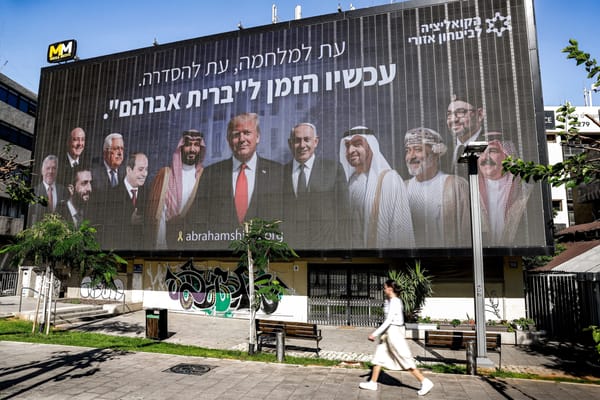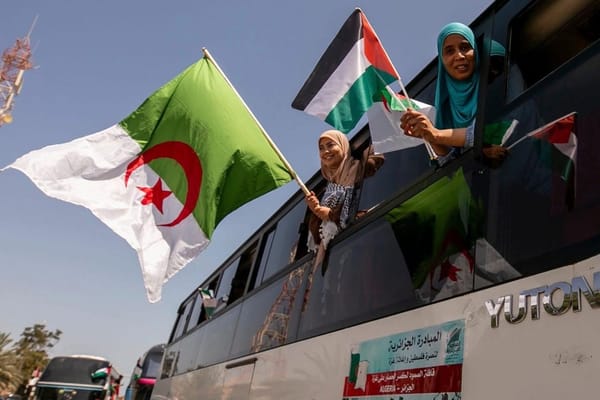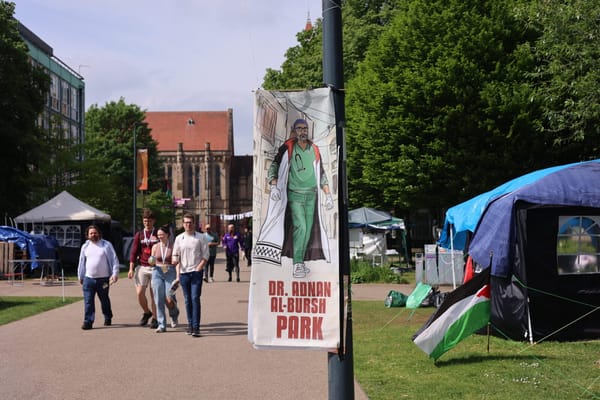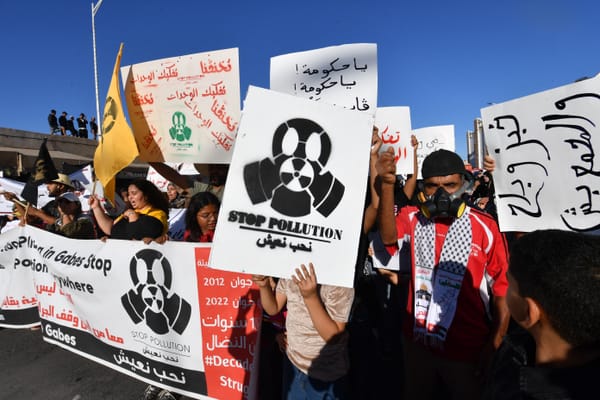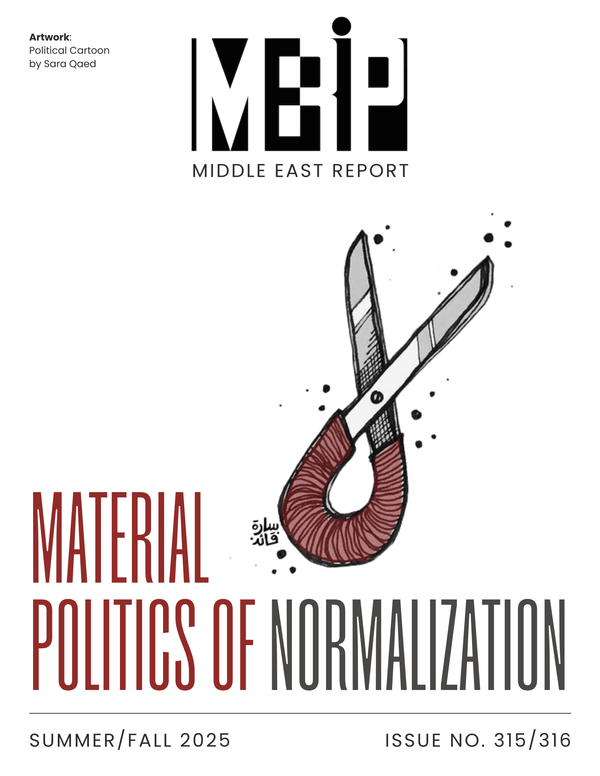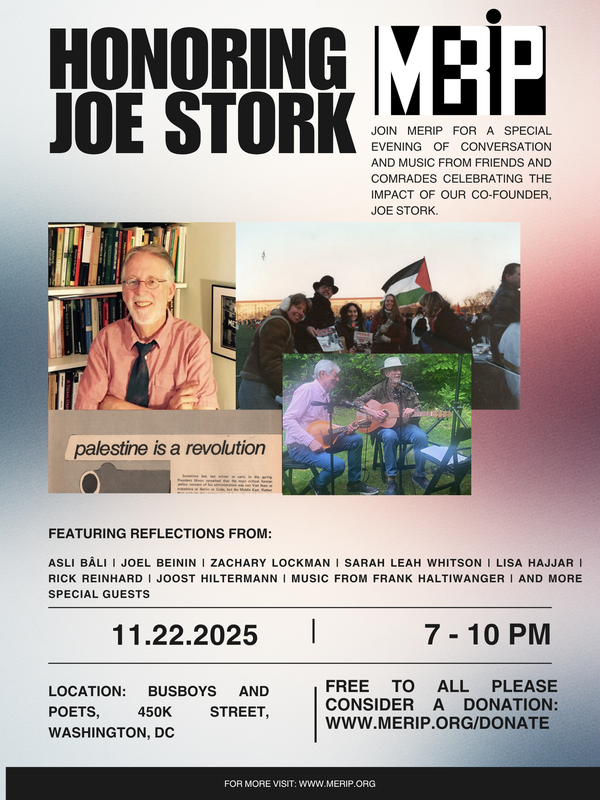Identity and Cultural Diplomacy of the Abraham Accords
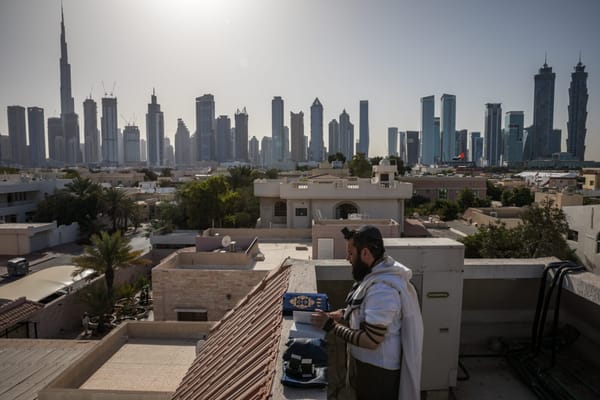

In December 2020, three months after the Abraham Accords were signed enabling the first commercial flights between Israel and the UAE, a short video went modestly viral on Israeli twitter.
A man in a white dishdasha and ghutra introduces his friends to the camera as curious bystanders look on. They are standing next to a dark luxury sports car under a Hebrew street sign, identified by the commenters as the Herzliya Marina. “We came here from Dubai!” he declares in Arabic. “Everyone is lining up to take pictures with us.”
These were not Emirati tourists—who remain practically nonexistent, with only 1600 visiting once COVID restrictions were lifted in 2022. These were Palestinians from Kafr Qasim, about 20 minutes away, playing a practical joke. Viewers immediately recognized the irony: All it took was a dishdasha and a Lamborghini for Arabs to be welcomed warmly rather than with hostility. (Five months later, in May 2021, a Palestinian man was stabbed by a Jewish mob just two miles north of this intersection, as violent riots broke out across the country). The impersonation is obvious to anyone familiar with Emirati dialects or dress, but for the Israeli Jewish onlookers, the Palestinian men passed easily as desired guests.
The joke captured an essential tension of the Abraham Accords, whose stated aim was to establish a “warm peace:” cultural and popular person-to-person normalization among the people of the signatory states. This vision of normalization depended not only on diplomacy and dealmaking, but on remaking both Arab and Jewish identities, redefining what kinds of Arabness or Jewishness are welcomed and which remain suspect.
Alongside much publicized financial and security cooperations, the agreement between Israel and the UAE was accompanied by cultural diplomacy projects aimed at rendering the Accords publicly coherent. Sponsored both by state entities and private business interests, a range of cultural initiatives have sprung up, utilizing diverse media to present the deals as an epic ethno-religious reconciliation, not merely a regional strategic alignment.
As Matan Kaminer notes, casting the Accords within the sphere of Abrahamic relations presents them as the conclusion of a family dispute, evoking a “genealogical imagination” that “makes it possible to link nation-states to one another in terms that are at once religious and racial.”[1] While future-oriented technological entrepreneurship was certainly at the forefront of the publicity surrounding the deals, two additional figures have been crucial to making them legible as a peace deal: the observant—or visibly Jewish—Jew and the indigenous Arab-Jew. These figures served to uphold a narrative of the Accords as a nativist reconciliation between Jewish and Muslim Arab kin on the shared path to prosperity.
In contrast to Israel’s prior normalization agreements with Jordan and Egypt, the text of the Abraham Accords is striking for its religious language. In its very first paragraph, the Abraham Accords Declaration singles out respect for religious freedom as the basis for strengthening peace in the Middle East. Its signees “encourage efforts to promote interfaith and intercultural dialogue to advance a culture of peace among the three Abrahamic religions and all humanity.” The lines that follow give the distinct impression that normalized relations between states is not the end goal of the agreement but rather a means for achieving interfaith dialogue and coexistence. It is a reconciliation of communities of faith, a peace without politics.
The language of tolerance used in the document has a decade-long precedent in the UAE. Fearing the rise of populist Islamists movements in the wake of the 2011 uprisings and wanting to signal to Western states that the UAE remains a safe and stable site for investment, the UAE has championed a series of state-led tolerance initiatives, among them founding a Ministry of Tolerance in 2016 (later renamed the Ministry of Tolerance and Coexistence) and declaring 2019 as the Year of Tolerance. These ventures positioned the UAE at the forefront of the fight against “religious extremism” and dovetailed with normalization.
Since 2020, several public projects promoting tolerance and coexistence have been launched by state actors as well as semi-private organizations. The most ambitious of them is the sleek Abrahamic Family House in Abu Dhabi, an interreligious complex designed by starchitect David Adjaye and containing a mosque, synagogue, church and research center for interfaith dialogue and public programming. The project grounds its legitimacy in historical precedents. Under the section “Origins” on its website it mentions the few archeological traces attesting to Christian or Jewish presence in the region (a number of eighth-century Christian sanctuaries on islands off the coast, and a Jewish tombstone found in Ras al-Khaima dated to the fifteenth–sixteenth centuries) and presents itself as continuing the historical legacy of coexistence under the benevolent spirit of trade and commerce.
Religious scholars have criticized the Abrahamic Family House both for fostering normalization and for promoting religious heresy, but its administration has been careful, especially since October 2023, not to associate itself directly with Israel or with the Accords. Other recent projects are more explicit in their political alignments. Global media extensively covered the Holocaust memorial exhibition that opened in 2021 at the private Crossroads of Civilizations Museum in Dubai, apparently at the suggestion of an Israeli visitor, Yael Grafy, who became the exhibition’s curator. The “first Holocaust Museum in the Arab world” illustrates how Holocaust memorialization has become a means to prove moral credibility on the international stage.[2] While global commemoration efforts often present the Holocaust as a universal lesson linked to the ascendance of human rights and democracy, the Dubai exhibition concludes with the word “Hope” hovering over the Israeli flag.
Another recent private initiative, the Manara Center for Coexistence, was founded in 2023 as a collaboration between the US Anti-Defamation League and Ali Rashid Al Nuaimi, a member of the UAE Federal National Council and an “international expert in combating extremism.” Al Nuaimi has traveled to Israel several times, meeting both politicians and religious leaders, including, most recently, Rabbi Shmuel Eliyahu, the head rabbi of Safed, whose rabid anti-Arab statements and rulings have put him under a rare investigation for incitement (the results of the investigation and the following disciplinary hearing remain confidential).
Tolerance initiatives are both inward and outward facing. What Elham Fakhro calls “tolerance washing” deflects Western criticism of human rights abuses and political repression while generating appealing tourist attractions.[3] More importantly, it offers a ready framework to legitimize the Accords, obfuscating the fact that they are a de facto military alliance rather than a peace deal: “interreligious exchange,” “the battle against antisemitism” and the shared struggle against “extremism” are regularly invoked as the Accords’ impetus as well as their outcome. As Dana al-Kurd notes, linking normalization to the battle against antisemitism allows for opponents to be cast as intolerant bigots, a move that has become all too familiar in the United States as well.[4]
Presenting the Accords as an interfaith reconciliation rather than a political agreement also has the effect of collapsing the distinction between “Jew” and “Israeli,” and identifying Israel as a representative delegate of global Jewry.
Presenting the Accords as an interfaith reconciliation rather than a political agreement also has the effect of collapsing the distinction between “Jew” and “Israeli,” and identifying Israel as a representative delegate of global Jewry. Thus, while the figure of the secular, tech-savvy, Israeli entrepreneur remained central to publicity efforts around the Accords, a parallel publicity trajectory centered the religious, observant or, at the very least, visibly identifiable Jew. In a particularly bizarre manifestation of this logic, Chabad rabbi Levi Duchman, an American from Brooklyn, was invited to introduce Emiratis to Israeli cuisine in a TV interview that was widely criticized for its culinary appropriation of Palestinian dishes.
Duchman is a central figure in the UAE’s “Jewish revival,” marked by the opening of kosher restaurants and a grocery store, religious services and at least two competing synagogues. The growth of a Jewish expat community in the Emirates is not entirely the product of formal normalization with Israel—Chabad rabbis have been active among US expats since 2014. Nevertheless, the Accords have placed the small Jewish community at the center of a global PR campaign, allowing for but also mandating their increased visibility. Israeli and Emirati officials celebrate Abu Dhabi and Dubai as safe havens where Jews can be visibly Jewish in a manner that no longer holds true, they are quick to point out, in the cities of Europe. Fleur Hassan-Nahoum, founding member of the UAE-Israel Business Council, Likud party member and former deputy mayor of Jerusalem, explained in her promotional podcast that the religious Emiratis in fact respect Jews because of their visible adherence to their faith.
The UAE-Israel Business Council was established by Israeli and American Jewish business leaders just before the signing of the Accords to promote economic cooperation and business partnerships. Much of the public media coverage of the Accords is the result of their collaboration with Ariella Steinreich of the US PR firm Steinreich Communications Group. Steinreich, a Modern Orthodox New Yorker who began consulting on the gas and energy sector in Dubai in 2008, was well positioned to create the narratives that would bring together US, Israeli and Emirati investors and business ventures.
Orthodox and observant Jews like the Chabad emissaries have rarely, if ever, appeared so prominently in Israeli diplomatic and promotional campaigns. Israel’s international relations have long been premised on its self-presentation as a Western-style secular democracy rather than as a constitutionally theocratic regime. The Accords, however, have positioned religious rather than political identity as the basis of peacemaking. But while the narrative of religious reconciliation fit into the existing tolerance campaigns in the UAE and was particularly efficient for international publicity, in Israel it had limited traction. Instead, the figure of the religious Jew was supplanted by a story of cultural and ethnic bonds.
The celebrated revival of Jewish life in the UAE is something of a misnomer, since established evidence of Jewish history on the coast is scarce. The Emirates differ in this respect from other Arab states that had thriving Jewish communities and rich Jewish legacies up until the middle of the twentieth century. Normalization with Morocco, for example, exists in complex relation to cultural projects initiated by a Jewish diaspora that maintains close connections with its Moroccan homeland.[5] In the UAE, however, such connections needed to be forged.
When Amir Hayek’s term as Israel’s first ambassador to the UAE was coming to an end, he gave an interview illustrating how intimate filial and cultural imaginaries are folded into the new diplomacy of the Accords. “The first thing that came to mind when we arrived in Abu Dhabi,” he says, “were my parents, may they rest in peace, who were born in Iraq […] As a child I was ashamed of my parents who listened to [Arab music]. Today I am ashamed of this shame. When I arrived in Abu Dhabi, something made me feel like family. The language, the food, the customs, the music. I discovered a lot about myself.” Hayek speaks of his diplomatic mission as a homecoming and an intimate family reunion. When he first met Emirati President Mohamed bin Zayed Al Nahyan, he recounts, he spoke about his parents, also telling the leader: “I love the Americans, I love the Europeans, but you are my cousin.”
Hayek’s filial attachments may appear personal, but they reiterate central talking points in the Accords’ PR campaign, which associate the deals with a particular Mizrahi narrative that has been gaining traction in the past decades. (Mizrahiyut—literally meaning Orientalness—is a homogenizing identity category forged in Israel, referring to Jews primarily from West Asian and North African countries). The components that make up Hayek’s narrative—Arabic speaking immigrant parents, the second generation’s shame and erasure followed by an eventual reconciliation, even pride, through rediscovery of heritage—are recurring tropes in this narrative. It is one that has become increasingly present in mainstream Israeli media since the 1990s.
Eli Eliyahu’s poem “Under the Ground,” now read in Israeli high-schools, offers one of the most concise variations on the trope: “And how can I help it if for me / the operation succeeded and Baghdad / died, and all that is left / is the music that my father / used to listen to on the stations of shame.” The object of shame varies across different accounts—it may be language, food or family traditions—but music most often appears, as in Eliyahu’s poem and in Hayek’s account, as the shameful marker of otherness which then becomes the gateway to reconciliation and proud reclamation of a Mizrahi or Arab identity.
When the Abraham Accords appeared in Israeli cultural production, it was in Mizrahi popular culture. Rinat Bar’s bilingual song, “Yalla Bye, I’m Off to Dubai” [yalla bye ani nosaʿat le-dubai], celebrates the new flight route from Israel to the UAE, mapping a new geography of desire: “Not Miami, not Hawaii” but Dubai gives her that emotional “high.” The chorus is repeated in Arabic, promising the beginning of a love story. The first post-Accords musical collaboration was “Ahlan Bik” (“Welcome”) by the Emirati singer Waleed al-Jasim and the Israeli singer Elkana Marziano. The song similarly professes longing for friendship and peace, but this time in three languages: Al-Jasim sings in Arabic, Marziano in Hebrew and some Hebraized Arabic, but to each other they sing in English, as if illustrating the United States’ role in mediating their new friendship. Strangely, the video accompanying the song undermines the message of friendship through a series of enigmatic symbols. The opening image of a plastic Native American figurine in a headdress brings to mind both settler colonial violence and an increasingly prevalent US-Zionist argument for Jewish Middle Eastern indigeneity that diverges from early Zionist claims to nativism, drawing its language from global indigenous struggles. An ominous snake slithers across the screen between clips of the two singers, a threat lurking below their affirmation of friendship.
Both songs belong squarely in the genre of popular Mizrahi music (muzika mizrahit or pop mizrahi), a genre that Motti Regev and Edwin Seroussi define as Western-style pop music with Middle Eastern “color.”[6] For decades it was excluded from mainstream Israeli media, viewed as vulgar and lowbrow, yet over the past twenty years it has become the most visible and successful music genre in Israel, increasingly in conversation with Arab pop from the region as well as with Mizrahi populist politics. As Nadeem Karkabi and Oded Erez argue, mainstream Mizrahi music’s incorporation of Arabic lyrics reflects significant shifts in the Israeli political landscape.[7]
In the 1990s and early 2000s the appearance of Arabic in popular music was associated with projects promoting “coexistence” between Jews and Palestinians. But in recent years, as Nili Belkind, Nadeem Karkabi and Loab Hammoud, observe “Arab music and culture have become decoupled from their conflictual national registers” and claimed as aspects of Jewish personal heritage and cultural citizenship.[8] These shifts have made Mizrahi music, in both Hebrew and Arabic, a readymade vessel for celebrating the alliance between Israel and its Arab allies, while bypassing local political hierarchies.
Mizrahi art has been similarly mobilized. Since 2021, the Israeli curator Sharon Toval, who has long held an interest in Mizrahi art and discourses of Mizrahi shame, has been curating and displaying works at the Ras al Khaima Fine Arts Festival. Toval established his contacts in the UAE through Israeli tourism development initiatives. His 2022 exhibition, “Longing, Be-Longing: On Post-Orientalist Influences in Contemporary Israeli Art,” featured leading Mizrahi artists as well as Palestinian artist Raida Adon and Druze artist Ameera Zyian (both of whom are Israeli citizens). The curatorial framing highlights the artists’ personal relation to a Middle Eastern heritage from which they have been cut off as second or third generation to migration—the Palestinian artists are alluded to obliquely through a reference to the “complexity” of Israeli culture. Toval’s framing highlights the works as expressions of migrant melancholy. Staging the exhibition in the UAE provides a potential overcoming of the identitarian crisis of migration, as in Hayek’s story.
Such cultural mobilizations for geopolitical ends are enabled, ironically, by the depoliticization of the figure of the Arab-Jew and of Jewish Arab culture. In the 1990s, Israeli activists and intellectuals began theorizing Mizrahiyut as a site for political opposition to Ashkenazi hegemony, and scholars such as Ella Shohat, Yehuda Shenhav and Sami Shalom-Shitrit began claiming an Arab-Jewish identity. For these intellectuals, the “Arab-Jew” was a provocation to Zionist logics separating Jews from Arabs and could be mobilized as an identitarian basis for solidarity with Palestinians. In this framing, Arab-Jews and Palestinians were both victims of Ashkenazi-led Zionism. In recent years, however, Arabness has become untethered from oppositional political projects and the Arab-Jew has made its way to Zionist Hasbara. The appeal to Arab culture by Jewish Israelis is no longer coded as a politically subversive project but as affirming an indigenous ethno-cultural identity that does not interfere with Jewishness as a national project and the basis of political superiority.
Arabic, once posited in Israeli culture as either the language of the enemy or of an oppositional discourse, is now a source of cultural capital and potential financial capital.
Arabic, once posited in Israeli culture as either the language of the enemy or of an oppositional discourse, is now a source of cultural capital and potential financial capital. As a legitimizing token of indigeneity, it can function as the ideological basis for new regional alignments, establishing a cultural-ethnic bond between Emiratis and Israelis. Nevertheless, Arabic as capital is conditional: It must remain non-political, relegated to the intimate aesthetic sphere of culture, origins and family. Palestinian collectivity, politically rather than culturally defined, is excluded from this alignment. Israeli comedian and activist Noam Shuster-Eliasi put it plainly in the satirical song “Dubai Dubai,” “it’s very important to me to send a message of peace and salam to every Arab, especially if he is 4000 kilometers away.”
The arts festival in Ras al-Khaima, is a local affair, largely removed from the large and plush international art markets in Dubai, Sharjah or Abu Dhabi. While these state-supported art scenes are important sites for creating political, cultural and financial capital, they are less likely venues for cultural normalization initiatives, as their global orientation means they remain coded as sites of autonomy and critique. Especially since October 2023, Palestinian artists and art about Palestine has been displayed prominently in both commercial and not-for profit art spaces, where normalization is ignored, albeit not actively protested. Mohammed Al-Hawajri and Dena Mattar, two of the founders of the Gazan art collective Eltiqa, made their way to Sharjah after their home in al-Bureij in the Gaza strip was destroyed, and several UAE venues have displayed the works that they managed to bring with them.
Cultural projects such as those surveyed here have become muted since October 2023, as the UAE attempts a careful balancing act: upholding normalization with Israel while signaling support for the people of Gaza. Furthermore, their efficacy in actually popularizing the accords is questionable: While in Israel the Accords were always seen favorably as a cost-free deal that managed to bypass the Palestinians, polls in the UAE show that their popularity plummeted after Israel’s attack on Gaza in 2021. After October 2023, as the scale of Israel’s genocide in Gaza and accelerated ethnic cleansing in the West Bank became apparent, even some former advocates of normalization have voiced their skepticism.
What these narrativizing projects do reveal is that normalization is not only a set of diplomatic agreements but also a cultural reordering. Narratives of tolerance and identity reshape the terms of Arabness and Jewishness, producing a vision of Middle Eastern society legitimized less by political institutions than by claims of indigenous belonging. In this sense, normalization is not simply a cynical PR campaign—though it is that too—but a shifting grammar of power in the region. It creates new languages of inclusion and exclusion, prosperity and dispossession, through which state violence and regional alliances are made to appear natural, even inevitable.
Meanwhile, the impressive exhibition that Toval put together at the souq during the Ras Al Khaimah Art Festival in 2024—which included several Israeli artists reflecting on historical and contemporary Middle Eastern imaginaries—was organized under the vague title “Unveiling Human Echoes” and gestured indefinitely toward “the myriad facets of human existence.” The specificity of an Israeli-Emirati encounter was no longer center stage.
[Shir Alon is an assistant professor in the Department of Asian and Middle Eastern Studies, University of Minnesota.]
[1] Matan Kaminer, “The Abrahamic Ideology: Patrilineal Kinship and the Politics of Peacemaking in the Contemporary Middle East,” Millennium 52/2 (2024), p. 200.
[2] Katrin Antweiler, “The Coloniality of Holocaust Memorialization in Post-Apartheid South Africa,” International Affairs 98/1 (2022), p. 263.
[3] Elham Fakhro, The Abraham Accords (Columbia UP, 2024), ch. 5.
[4] Dana El Kurd, “The Paradox of Peace: The Impact of Normalization with Israel on the Arab World,” Global Studies Quarterly 3/3 (2023), pp. 7–9.
[5] Driss Maghraoui, “The Multiple Layers of Morocco’s Normalization with Israel,” in Yang, G., Zhang, J., Xiong, X., Liu, L. (eds) Risks, Resilience and Interdependency (Palgrave Macmillan, 2025), p. 260.
[6] Motti Regev and Edwin Seroussi, Popular Music and National Culture in Israel (Berkeley, CA: California University Press, 2004), p. 191.
[7] Oded Erez and Nadeem Karkabi, “Sounding Arabic: Postvernacular Modes of Performing the Arabic Language in Popular Music by Israeli Jews,” Popular music 38/2 (2019); Oded Erez, “The Regime of Style: Cover Versions, Reality TV, and the Aesthetic Principles of Populism in Israel and Beyond,” Popular Music 41/ 3 (2022).
[8] Nili Belkind, Loab Hammoud and Nadeem Karkabi, “Arab Music and the Changing Political Imaginaries of Cultural Citizenship in Israel: The Musrara School as a Case Study,” International Journal of Cultural Policy (2025), p. 4.
Shir Alon, "Identity and Cultural Diplomacy of the Abraham Accords," Middle East Report 315/316 (Summer/Fall 2025).
